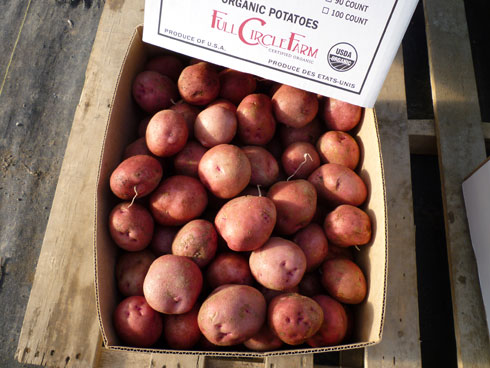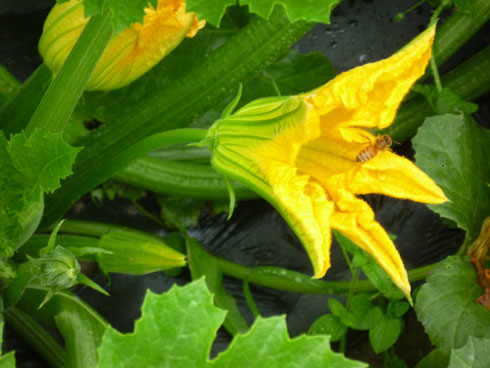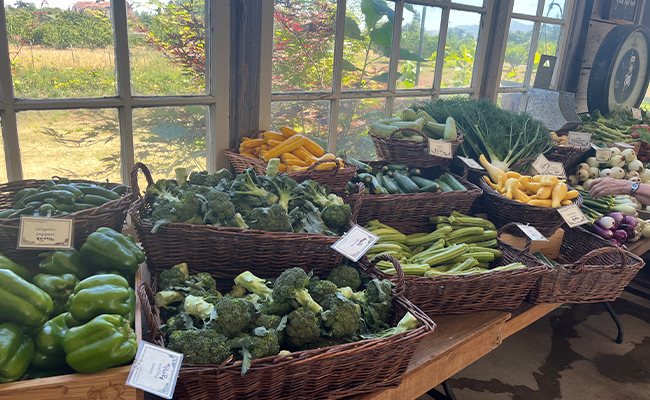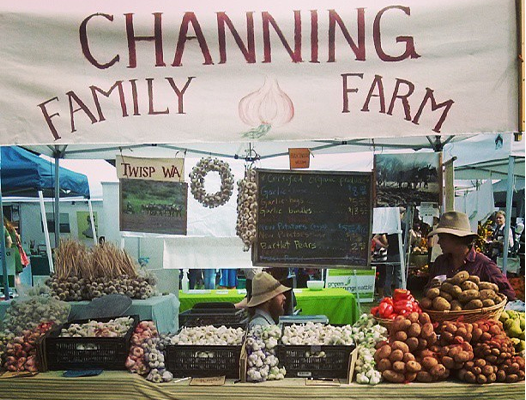How Much of Full Circle Produce is Local?
The idea of buying local food resonates with just about everyone, for all the good reasons there are to do so: supporting regional agriculture, fostering community, preserving open space and biodiversity, reducing carbon use, and of course, the flavor and nutritional value of food that’s just a day or so from the farm. Here in the northwest, our growing season starts in April (eastern Washington) or May (west side), and generally runs through October. During this period, 80 to 100 percent of our produce comes from local farms, and much of it from our own 450 acres. Starting with asparagus, tender greens and peas and finishing with tree fruit and storage crops like potatoes, hard squash and bulk roots, our local season provides us with a wide variety for the table. When first frost hits the fields in November, the choices become dramatically fewer.
Our northwest farm-to-table program is designed to source as much produce locally as is available, supplemented by items not grown or otherwise not accessible in our region. For Full Circle, the outer reach of northwest local is about 300 miles. From November through May, in addition to local offerings, we source fresh greens, citrus and other products from trusted growers in California, Arizona, Texas and Mexico. During those months, local produce may comprise 10-15 percent of our offering, and although the option exists to customize orders to include only local produce, it seems that variety is the spice of life: as evidenced by our customers’ orders, not many of us truly shift to a winter diet of roots, preserved foods, legumes, and grains. What seems to test our commitment to eating locally-produced food is seasonality.

Unlike “organic”, which has a legal definition and a certification process, “local” means different things to different people. One can think of it as a set of concentric circles beyond one of which each of us decide not to go without careful consideration. The question, however, is how realistic a game-changer eating only local or regional food can ultimately be, given varying climate conditions and the production capacity of land within a geographic area. Also to be considered, the total carbon output of crop production and storage must be weighed against that of miles from farm to plate – for an accurate picture of environmental sustainability. For instance, fresh crop apples and pears from the southern hemisphere shipped by barge are less carbon-intensive than Washington fruit stored under refrigeration since harvest in the fall. Might that fact outweigh the value of supporting local farmers? Perhaps not, but the questions are less simple than they may seem. (By the way, we choose to buy Washington fruit.)
As the dialogue about our food system evolves, it’s clear that its problems – environmental, political, and social – are complex and nuanced. Nettlesome questions, from how to design global food policy to what factors to consider when choosing the food for our own tables, come down to decisions based on individual priorities and knowledge of the issues. Surely local food is a step in the right direction and an obvious choice whenever it is available. The locavore movement, after all, began in San Francisco – arguably our country’s most educated food community yet the one with the most direct access to fresh local food year-round. So when push comes to shove in the northwest, everyone is tired of parsnips and potatoes, and the children want something colorful and fresh in the dead of winter, consumers may agree to compromise a bit and look farther afield. We may not need tomatoes 365 days of the year, but kids like oranges, and what home cook doesn’t need flat leaf parsley and lemons? So long as the food is good food and our money goes to good farmers.

There are many wonderful farms and cooperatives to support, and we are building working relationships with them every day. We will continue to dedicate our efforts to provide as many local food options as are available. Beyond that, with our focus on a set of sustainability criteria, we’ll offer a reasonable amount of variety throughout the seasons. What you can be certain of is that the produce we offer comes from farms we know and trust, whose stories we will share, and with whom we have an increasing number of production agreements in place. What we envision is a broad network of regionally integrated farms connected to an alternative distribution system based on collaboration and sustainable values, scaled to include small farmers whose viability is threatened by the massive corporate structure which moves the majority of our food today. We can do this with your help – one meal at a time.
This week, northwest produce in the mix includes spinach and radishes from our farm, cremini mushrooms grown by Champs Mushrooms in B.C.’s Fraser Valley, yellow onions from Andersen Organics in Othello, Washington, cameo apples from First Fruits, the Rogers’ third-generation family farm in Wenatchee, and fresh rhubarb from Joe Siri & Sons in Clackamas, OR. Watch this list grow as the season unfolds!
What does local mean to you? How does seasonality challenge your commitment to eating local? Let us know what’s most important to you.


Leave a Reply